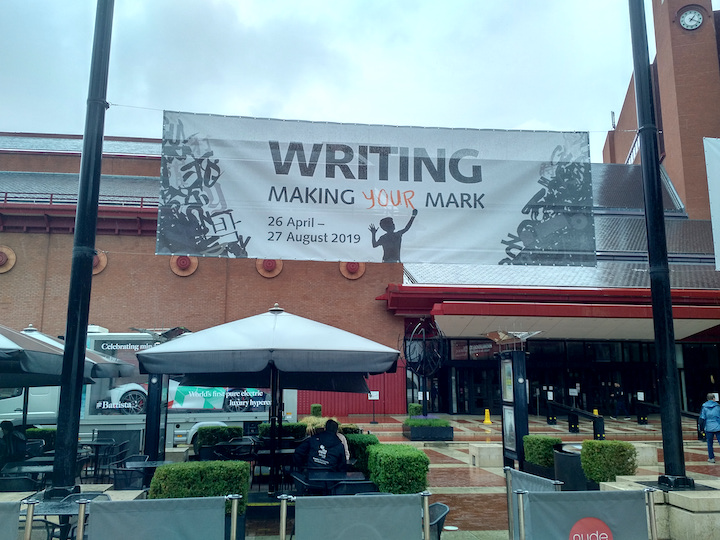Two weekends ago, I had the privilege of viewing the British Library exhibit Writing: Making Your Mark. I was fortunate to learn about this event via a post at Bleistift just a few days before my trip.

Yes, it was raining.
The exhibit had a wealth of historical artifacts, and traced the written word from Hieroglyphics through to Emoji. Clay tablets, typewriters, ballpoint pens, and word processors were all explored. Accounting was cited as being a key motivator behind the development of written characters.
One thing surprised me – the graphite pencil was missing! The original Biro and modern Bic were both deemed worthy. So was the lithograph. And two or three typewriters. But not the pencil. There was a small display of lead (actual lead, not “lead” as a euphemism for graphite) pencils dating from around the the year 1400, and these no doubt served as a modern pencil forerunner and inspiration.
I though Henry Petroski’s The Pencil had established the pencil’s role in history. But, I’m not a professional curator or historian. I’d love to know why pencils didn’t make the cut.

This reminds me of the very beginning of Petroski’s book, where he notes that various museum and other historical exhibits largely, or completely, overlooked the pencil…even those covering Thoreau’s life and work!
Along similar lines: the pencil was something of an afterthought for the BBC series 50 Things That Made the Modern Economy (that is, not one of the first fifty things).
Chris, thank you for the informed comment. I did observe that all the modern era writing “written word” technology at the exhibit (possibly excepting the ballpoint) was much more complicated and expensive than a pencil. Overlooked indeed!
Michael, thank you, another good observation. The pencil does seem to be an afterthought.
Seeing the pencil being overlooked and neglected on those and similar occasions is disappointing (and it reflects badly on this exhibition).
But isn’t its inconspicuous nature one of the main features of the pencil and one which makes dealing with it so special? Imagine the pencil was prominent and praised on every occasion. Would we still enjoy using it and talking about it as much as we do now? Now and then I would also be happy if the pencil received more attention but most of the time I’m happy about the pencil leading an inconspicuous life ;-)
But anyway – an exhibition like this should have shown the pencil.
Gunther, thank you for the comment.
Yes, the pencil has remained true to itself, inconspicuous even when faced with a potential spotlight.